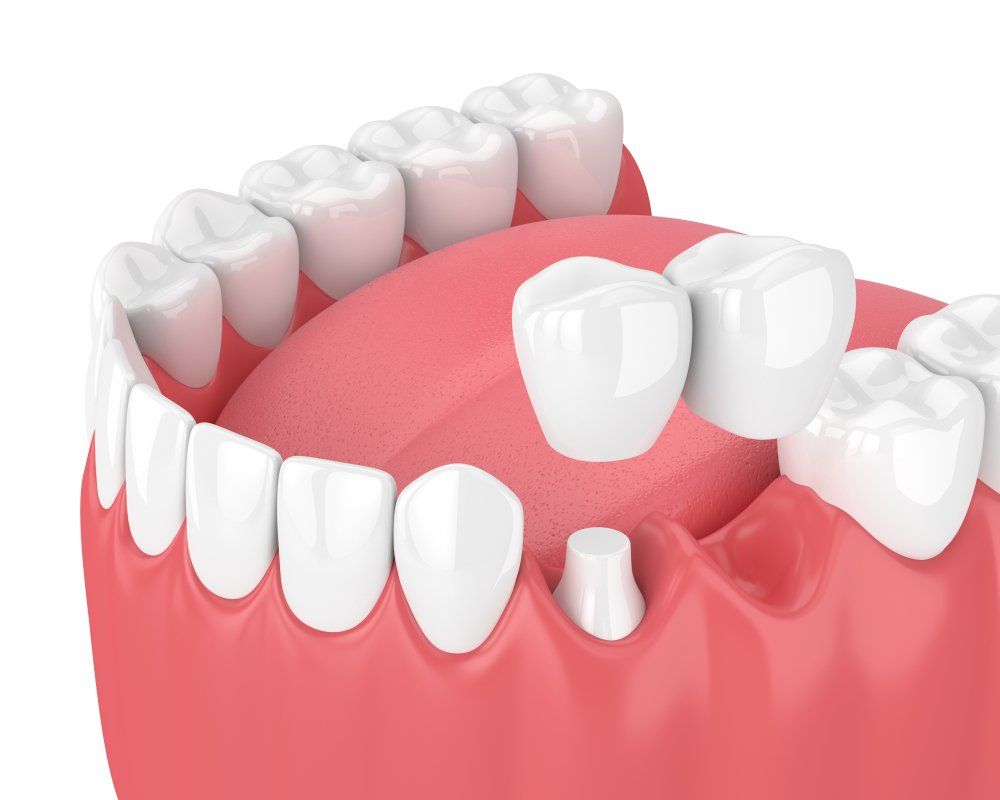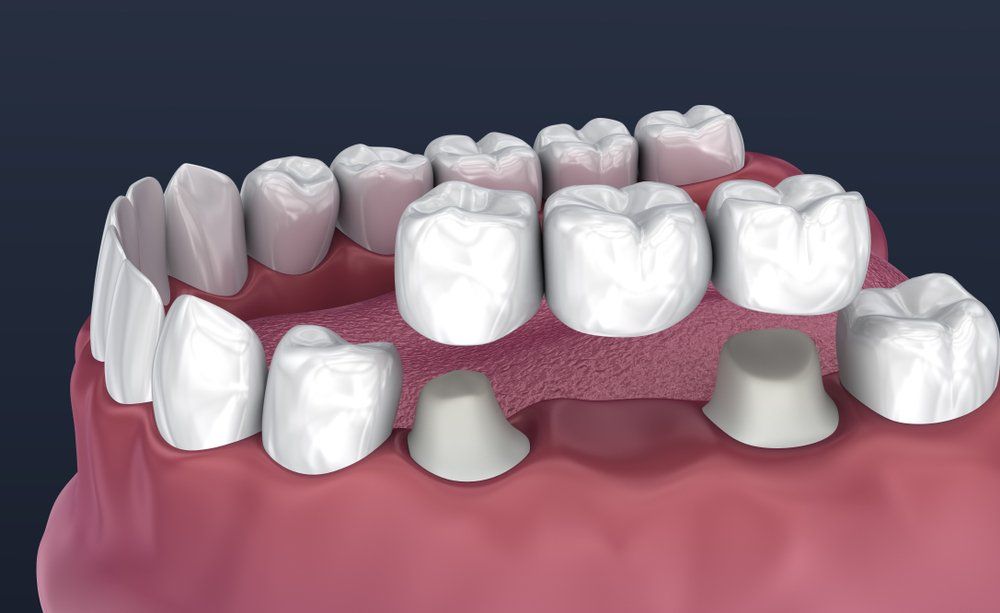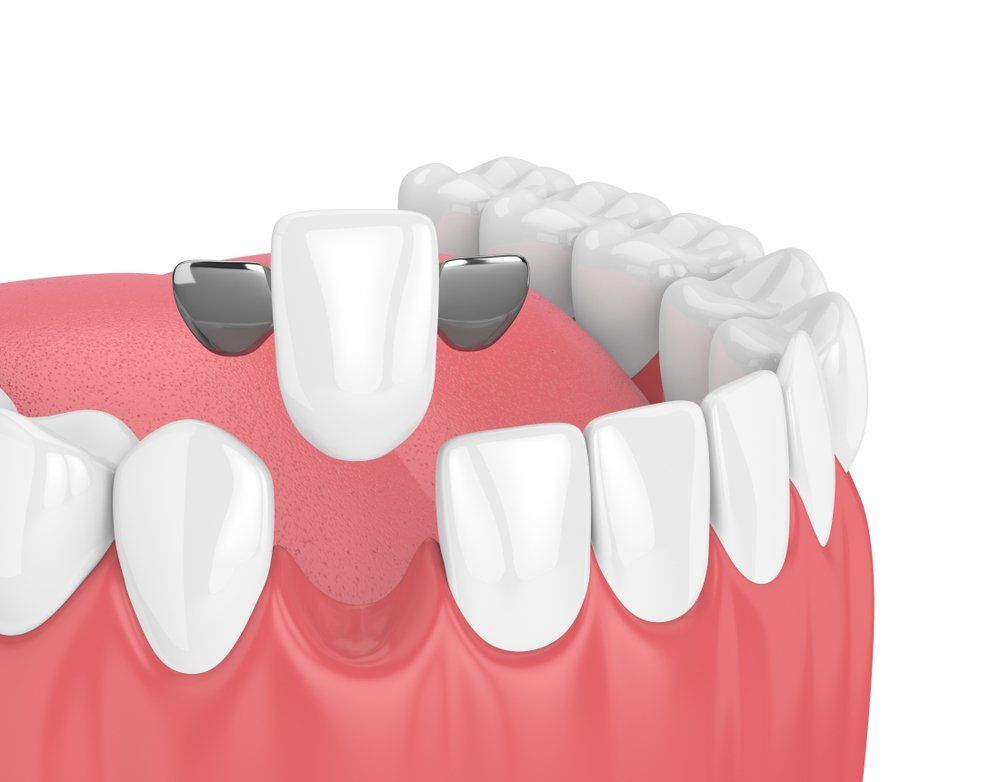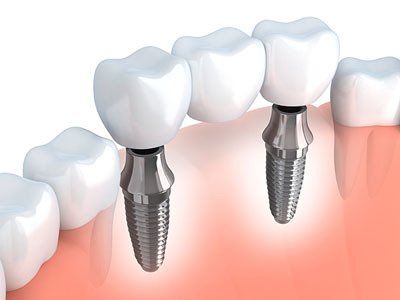FREE PARKING - Downtown Victoria - (250) 940-8111
Restorative Dentistry In Victoria, BC
Restorative dentistry is the term dental professionals use to explain how they replace missing or affected teeth. Fillings, crowns (“caps”), bridges, and implants are common restorative procedures. The goal is to bring back your natural smile and prevent future oral health issues. Restorative procedures help patients with keeping their teeth properly aligned, preventing plaque build-up, and boosting their appearance and self-esteem.
Dental Implants
Dental implants are artificial tooth roots that are surgically placed into your jaw to replace a missing tooth. Compared to dental bridges and dentures, implants are a more permanent long-term solution to losing a tooth.
You can replace all your teeth with implants. However, if you are missing an entire row of teeth, procedures like All on 4 or Implant Supported Dentures may be a more suitable option:
- All on 4 are custom made to replace a full upper or lower set of teeth that are permanently placed into your mouth and cannot be removed by the patient. It is a one piece full bridge secured into place using implants.
- Implant Support Dentures are removable and can snap into place. Similar to All on 4 in that the row of teeth is supported by implants, except the row of teeth can be removed by the patient.
Implants are typically placed in a single appointment, in less than 1-hour. The initial pain and swelling on your gums from placing the implant should subside within 3-4-days. If the pain and swelling should continue after 5-7-days, please contact our office. Your bone on the other-hand, where the titanium rods are placed, takes anywhere from 3-6-months to fully heal. After 3-6-months of healing, the protective cap placed over the implant can be removed and a permanent crown can be placed.
If you need to have a dental extraction, this is the perfect time to replace that tooth with a dental implant. If the tooth is not replaced, you may start to notice your face beginning to shrink, or collapse into itself. This happens because there is nothing supporting the bone structure or structural integrity of your jaw. If this happens, you may require a bone graft. Bone grafting is the process of replacing or augmenting bone around a missing tooth. Bone loss is typically caused by the extraction of a tooth and the loss of the supporting bony structure. When placing an implant, bone may need to be augmented to give the implant a supporting structure. This is why we recommend replacing a missing tooth with an implant right away, as this usually eliminates the need for bone grafting later and helps prevent facial collapse. This also prevents 2 healing periods (1 for the extraction and 1 for the implant).
Dental Crown
A dental crown is a custom-made cover that fits over an original tooth that has either been decayed, damaged, or cracked, and is used to fully cover a portion of tooth that lies above the gumline. Crowns are made from a variety of different materials such as porcelain, gold, acrylic resin, or a mix of these materials. Porcelain generally has the most natural appearance, although it is often less durable. Most crowns nowadays though are made with a white-based ceramic, and Zirconia ceramic has been reported to have the highest level of mechanical properties. Zirconia bases can be used with a porcelain outer layer to deliver great esthetic outcomes. The treatment plan for a crown involves:
- Numbing your tooth to remove any decay
- Sculpturing your tooth to provide an ideal fit for a dental crown
- Making an impression of your teeth in order to create a custom-made crown (usually takes 1-2-weeks)
- Making a temporary crown out of acrylic resin and fitting it onto your affected tooth
- Applying the custom-made crown by removing the temporary crown
- After ensuring the crown has the proper look and fit, our dentist cements it into place
This process generally consists of 2-3 visits over a 3-4-week period. Once the procedure is completed, proper dental hygiene, including daily brushing and flossing, is required to maintain healthy, bacteria-free teeth, gums, and crowns. This helps in the prevention of gum disease. Given proper care, your crowns can last a lifetime.
Dental Bridge
A dental bridge is a permanent appliance that replaces a missing tooth or missing teeth, and are an alternative to partial dentures. Dental bridges are made up of several pieces that are fused together to fit into the open space where your tooth or teeth used to be. They serve both practical and aesthetic purposes, enabling you to eat and speak as well as restoring your smile.
The bridge itself can be made of several different types of material, including gold, alloys, or porcelain. When replacing a front tooth, porcelain is most often the material of choice because it can be matched to your natural tooth color.
The artificial teeth used in dental bridges are called pontics. You will have a pontic for each missing tooth, created to be close in shape and size to the missing one(s). Pontics are anchored to a tooth or teeth next to the gap (called abutment teeth) or to a dental implant.
Traditional Fixed Bridge | This is the most common type of bridge. It includes a crown on either side of the pontic(s).
Resin-Bonded Bridge | This is often used to replace front teeth. Instead of crowns, it uses porcelain or metal frameworks with "wings" that are bonded to the back of your teeth on either side of the gap.
Implant-Supported Bridge | An implant for each missing tooth is surgically embedded into your jawbone, in one procedure. The bridge, which contains the pontics, is placed over them in a later procedure.
Cantilever Bridge | When only one side of the gap contains a natural tooth, the pontic(s) are anchored by a single crown on that natural tooth.
We are the local Victoria Dentist near you!
Rediscover your confidence and your smile
Request Your Next Dental Appointment
We look forward to seeing you soon!
Please note, we will try our best to accommodate your schedule
Thank you so much for contacting our dental practice. While we strive to respond to all inquiries right away, we may be away from the desk helping a patient or out of the office. We will do our best to reach out to you shortly.
Please note, if this is a dental emergency, it would be best to call our practice as this is the fastest way to reach us (250) 940-8111.
Please try again later
Victoria Dentist
We understand that trying to find a nearby dentist you can trust is difficult, that is why we make it easy for you to work with us.
(250) 940-8111
1025 Johnson Street - Unit 401 - FREE Parking
reception@elementsdental.ca
Helpful Links
Dental Practice Hours
- Monday
- -
- Tuesday
- -
- Wednesday
- -
- Thursday
- -
- Friday
- -
- Saturday
- Appointment Only
- Sunday
- Closed
All Rights Reserved | Elements Dental
All Rights Reserved | Elements Dental
Dentist Website Diagnosed, Treated, and Cured by Dr. Marketing Inc




